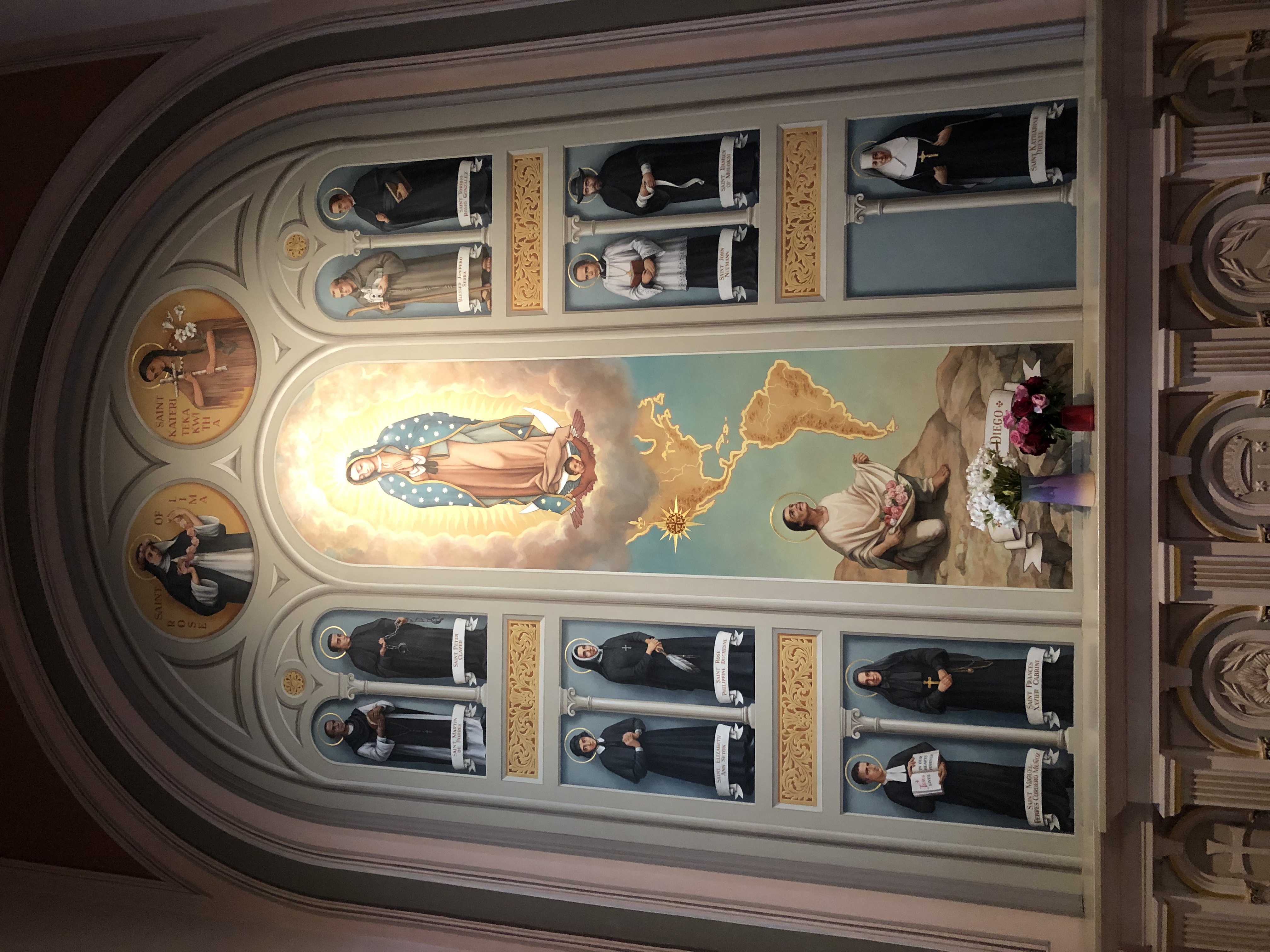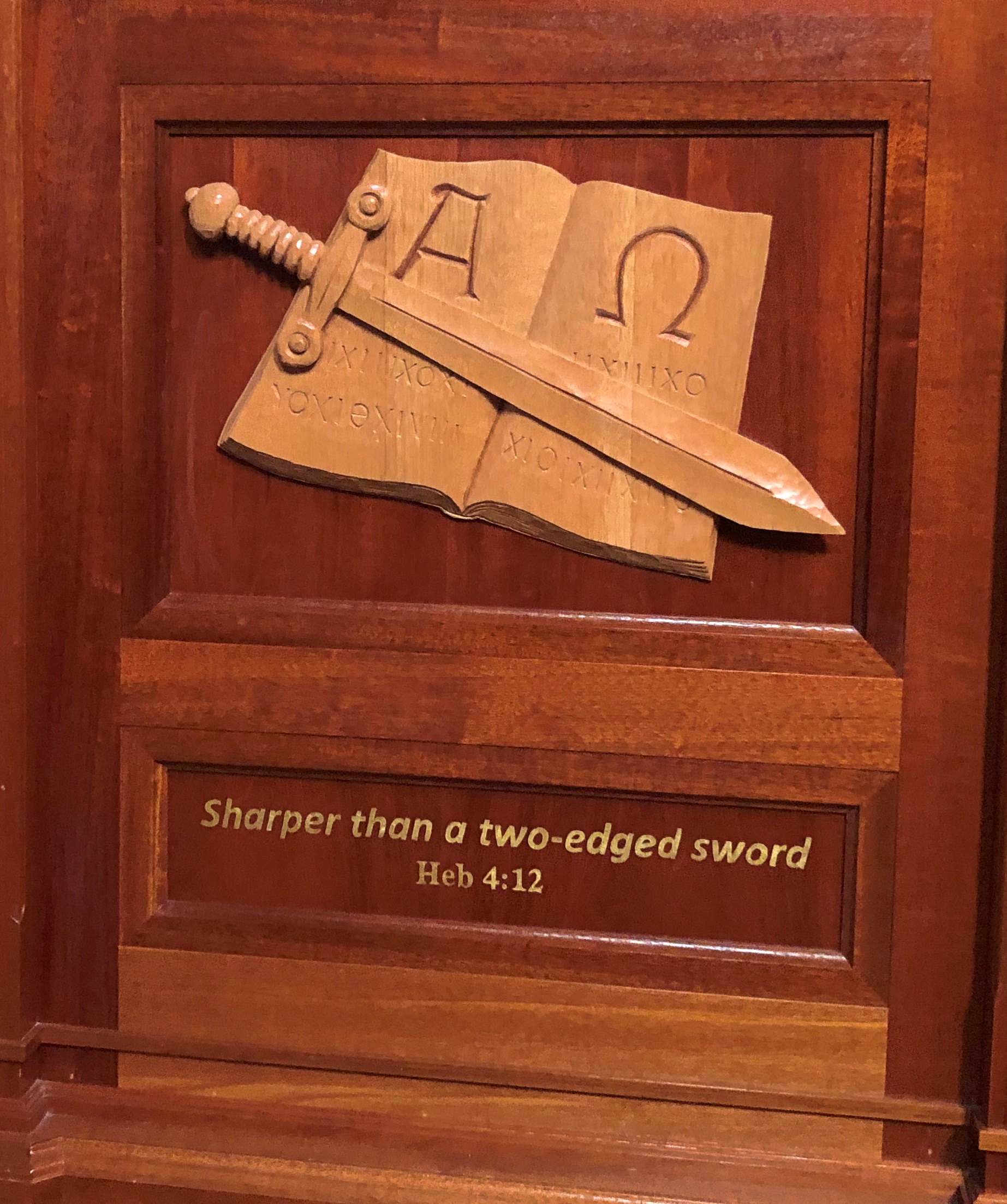Urban churches are often locked when no service is imminent, but on the other hand, sometimes a side or rear door is open, while the main doors won’t budge. That was the case at the Cathedral of the Blessed Sacrament in Sacramento.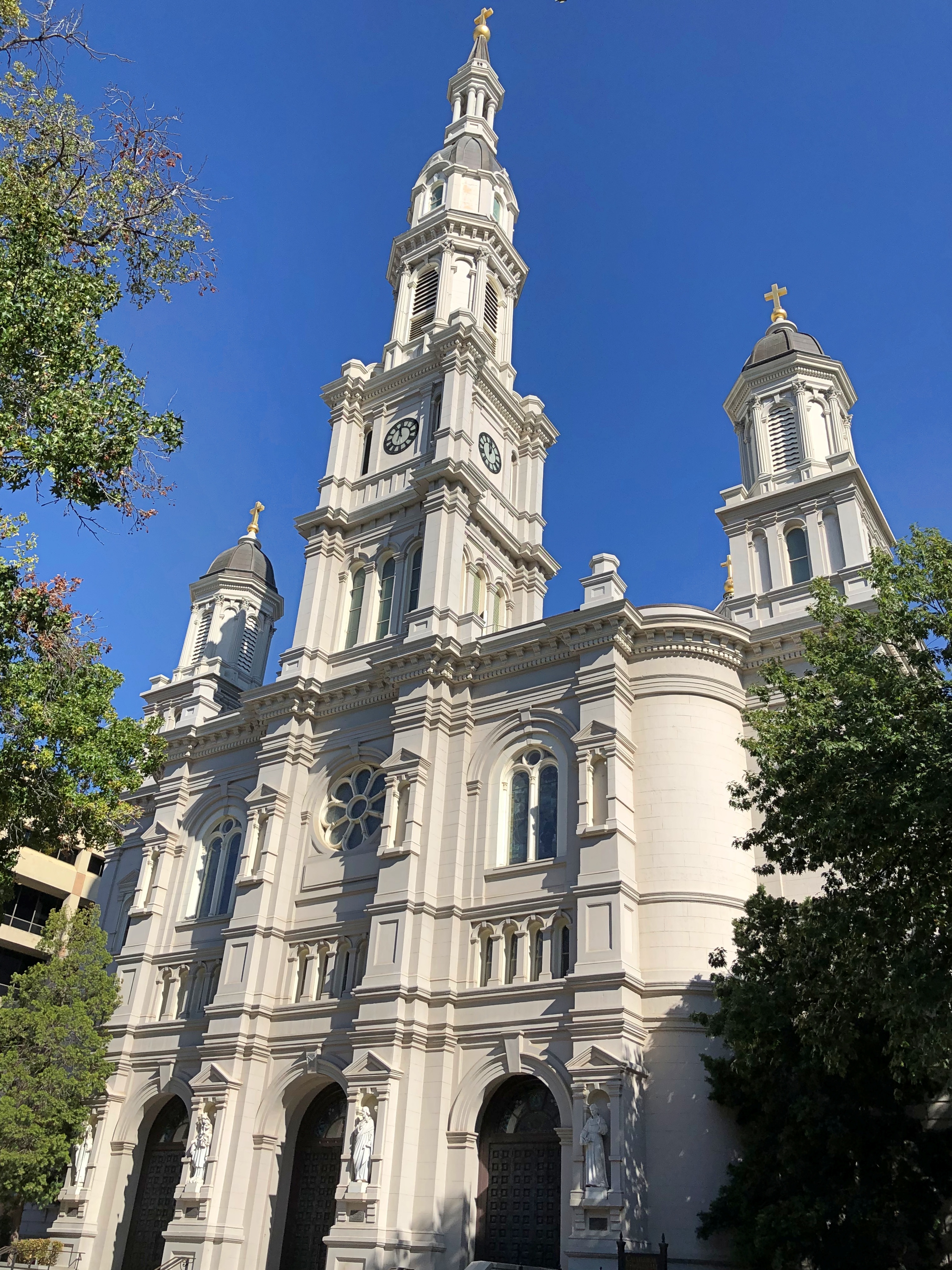
A fuller view. The nicely written Wiki entry is worth quoting a bit:
“Among the first of thousands to seek his fortune in the Sacramento region during the California Gold Rush, Patrick Manogue had aspirations that differed from many of his fellow fortune seekers. His goal was to earn enough money to finance a trip to Paris, where he planned to enroll in seminary college and become a Roman Catholic priest.”
So he did, eventually becoming Sacramento’s first Catholic bishop in 1886.
“Inspired by churches he’d seen in European plazas, Manogue worked to secure property just one block away from the State Capitol, with a dream of building a cathedral in Sacramento. Manogue modeled the cathedral after L’Eglise de la Sainte-Trinite (The Church of the Holy Trinity) in Paris.”
The building, design attributed to Bryan J. Klinch, a San Francisco architect of Irish birth, was dedicated in 1889.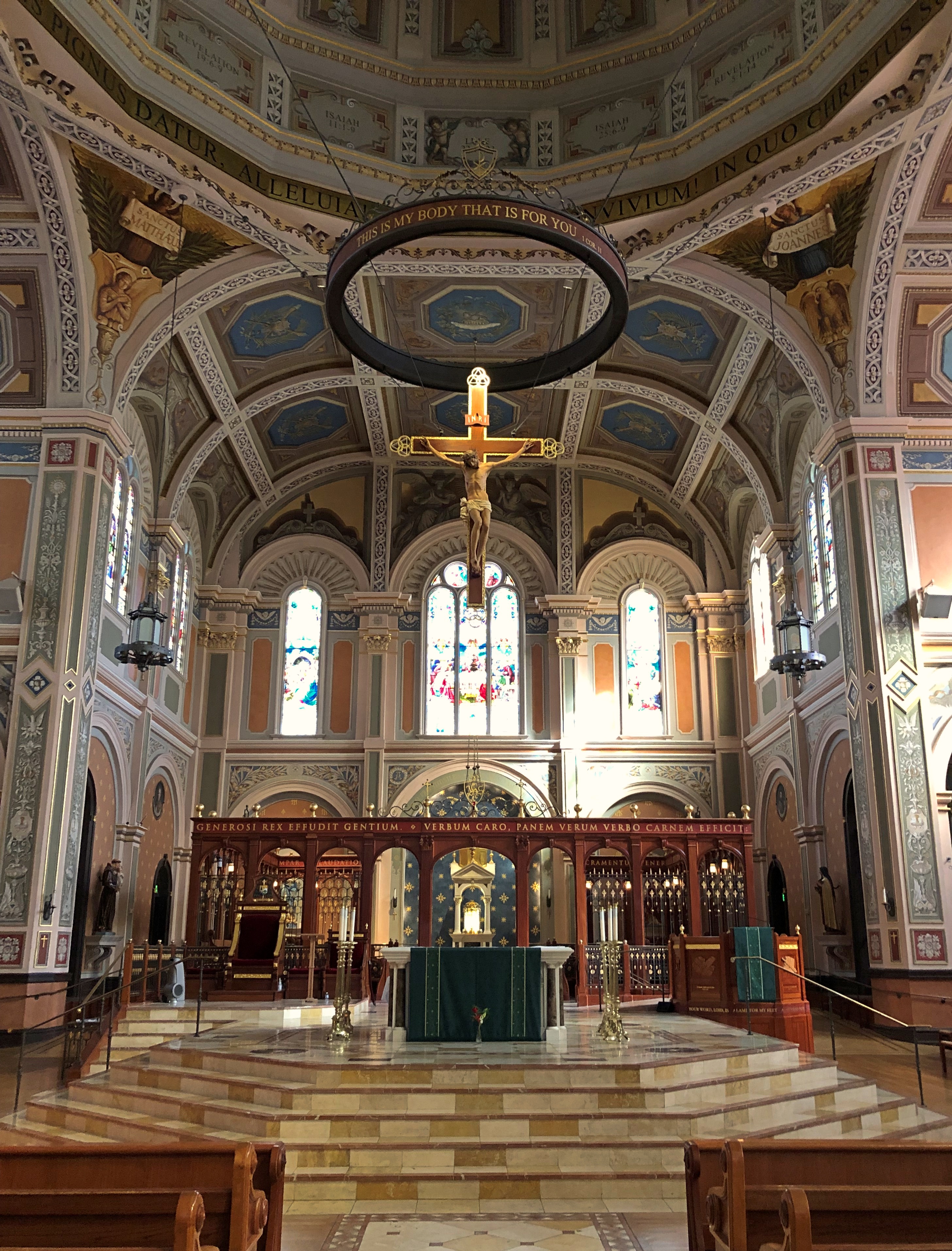
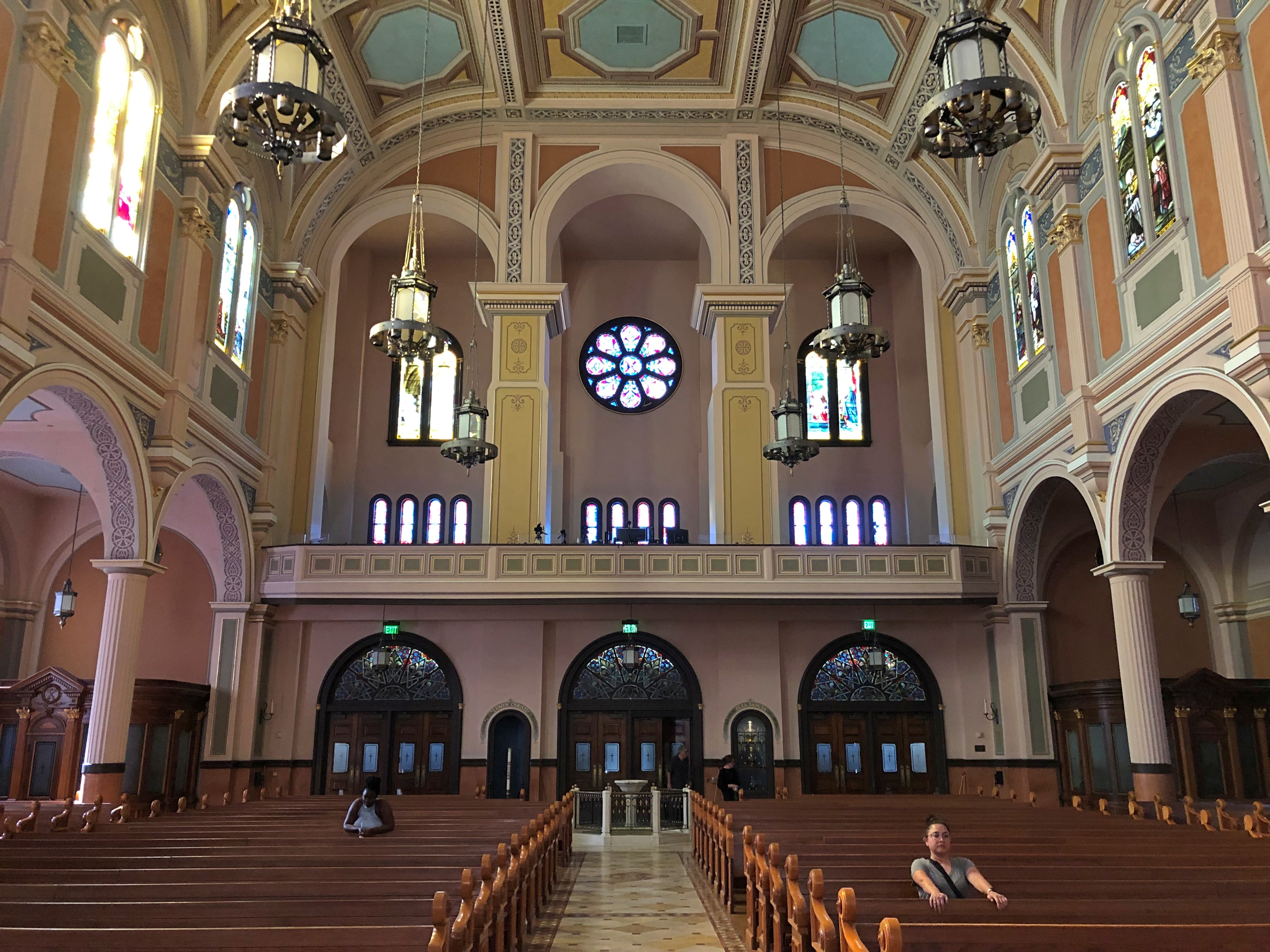
“Traditionally, cathedrals are built with the main altar on the east end, to reflect ‘Jesus coming like the rising sun in the east,’ ” the cathedral web site says. “While the exterior of the cathedral is Italian Renaissance, the interior was fashioned after the Victorian style of the day. Much of the decor was painted in a style called trompe l’oeil….”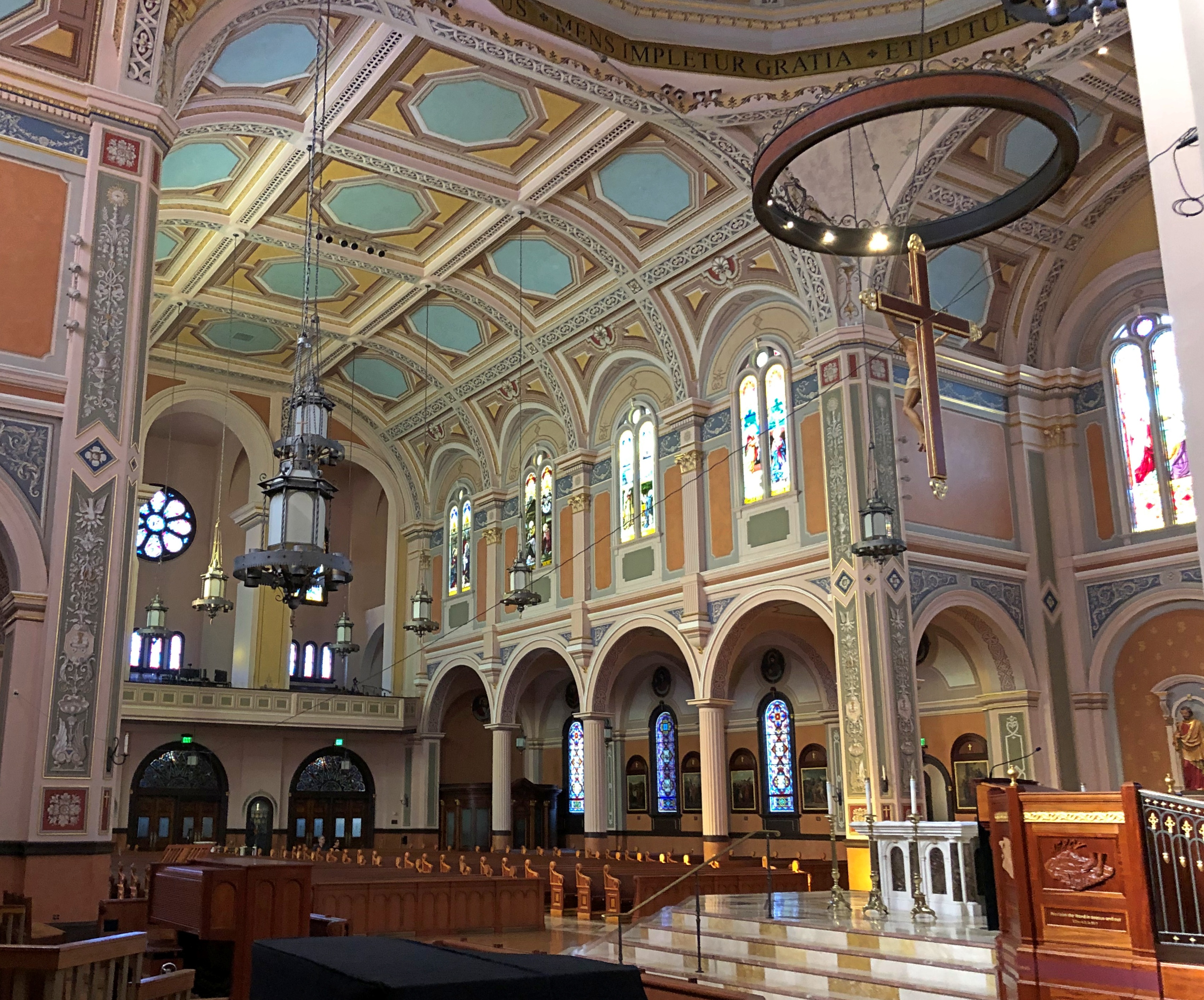
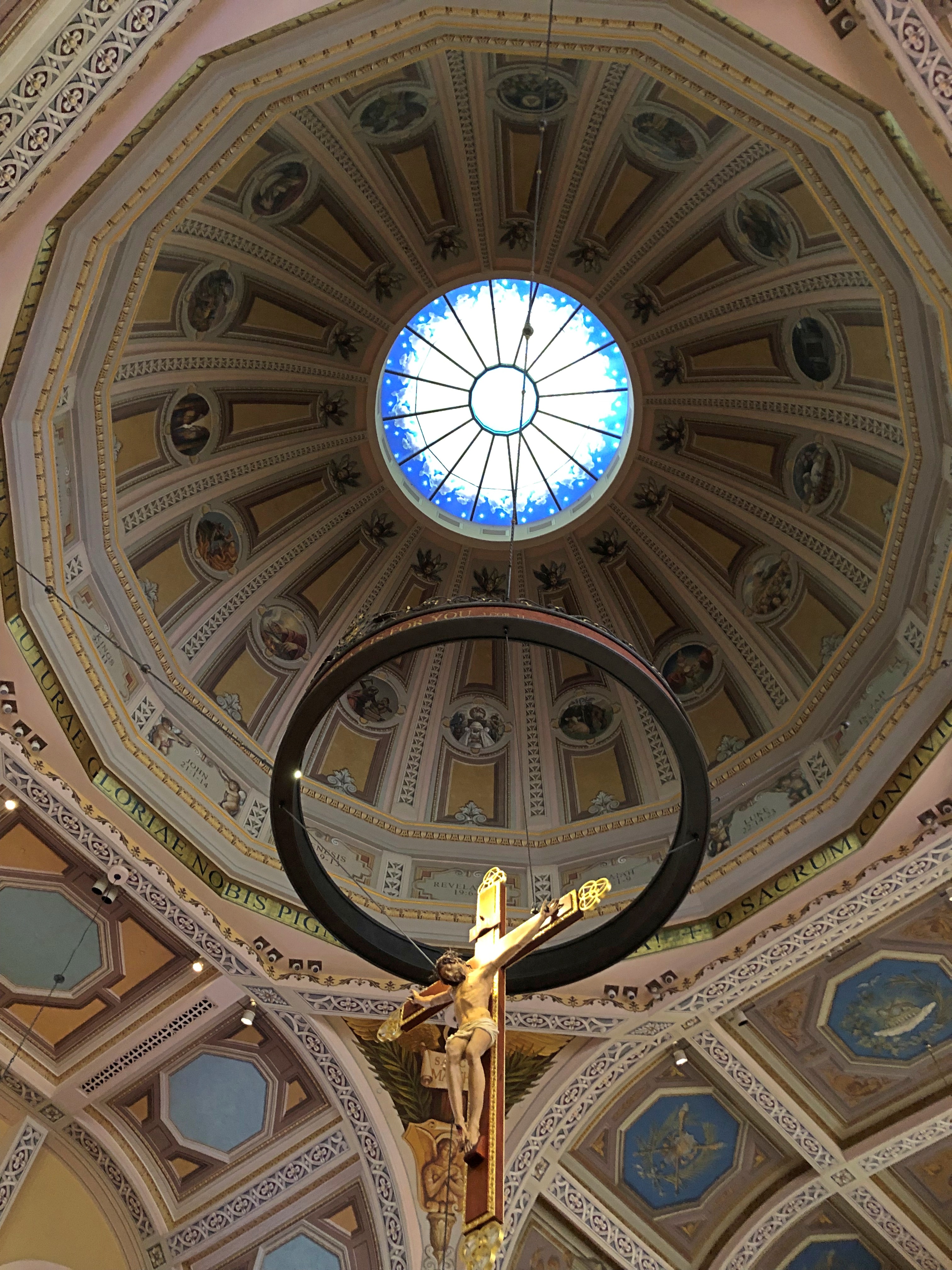
Above the altar hangs a 13-foot crucifix with a crown overhead that is 14 feet in diameter, with a combined weight of almost a ton. They are held up by aircraft cables.
Gets right to the point, doesn’t it?
